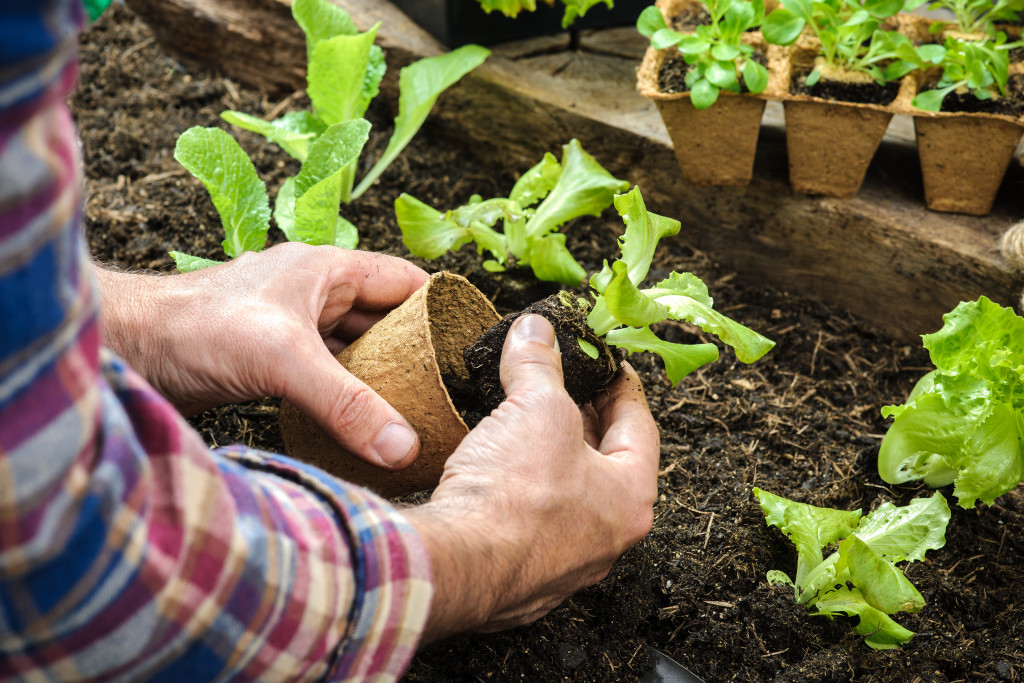Like many people, you may be looking for ways to reduce your carbon footprint and help the environment. One way to do this is by turning your garage into a greenhouse. This will help reduce your carbon footprint and allow you to grow your own fruits and vegetables all year round. Many people think greenhouses are expensive to build and maintain, but there are many ways to create a greenhouse on a budget.
Here are a few tips for turning your garage into a greenhouse.
1. Plan the layout of your greenhouse.
You’ll need to decide how much space you have to work with and what type of plants you want to grow. If you’re limited on space, you can grow plants in pots or hanging baskets. But if you have a larger area, you can consider growing fruit and vegetables directly in the ground.
When creating your greenhouse layout, consider the amount of sunlight each area will receive. Plants need different amounts of light, so you’ll need to plan accordingly. Some plants also require more ventilation than others, so be sure to consider that. You want to create a comfortable space for both you and the plants.
2. Choose the correct type of material for your greenhouse.
Because you’ll be growing plants inside your garage, you’ll need to choose materials that won’t off-gas or release toxins into the air. The best type of material to use is polyethylene, which is a durable and safe option.
You’ll also need to choose the right type of glazing for your greenhouse. The most common types are polycarbonate and acrylic. Polycarbonate is the more durable option, but it can be more expensive. Acrylic is less durable, but it’s also cheaper.
3. Plan the flooring of your greenhouse.
The flooring of your greenhouse needs to be easy to clean. A durable garage floor coating that can withstand foot traffic and moisture is a good option. Epoxy coatings are a popular option because you can easily clean them and are also slip-resistant. This is best for greenhouses with potted plants.
If you’re growing plants directly in the ground, you can consider using gravel or stone. This type of flooring is easier to maintain, and it helps with drainage. You can also install a drainage system underneath the flooring to help keep the roots of your plants healthy.

4. Consider the lighting and ventilation of your greenhouse.
Plants need sunlight to grow, so you’ll need to consider the lighting of your greenhouse. You may need to install grow lights if you live in an area with long winters and short days. These can be expensive, but they’re worth it if you want to grow plants year-round. Skylights are also a good option for providing natural light.
Ventilation is also essential for greenhouses. You must circulate the greenhouse air to prevent pests and diseases. But you also don’t want to exchange too much air, which can dry out the plants. You can install an exhaust fan to help with ventilation.
Additionally, the temperature inside your garage will play a role in the health of your plants. You may need to install a heater or air conditioner to keep the temperature steady. Insulating your garage’s walls and ceiling will also help regulate the temperature. You should also insulate your garage door to prevent heat from escaping.
5. Choose the right type of plants for your greenhouse.
Not all plants thrive in greenhouses. You’ll need to choose plants that can tolerate your garage’s temperature and humidity levels. Some common greenhouse plants include tomatoes, cucumbers, peppers, and herbs. These plants can withstand higher temperatures and humid conditions.
You’ll also need to consider the amount of light each plant needs. If you’re growing plants in pots, you can move them around to get the right amount of light. But if you’re growing plants directly in the ground, you’ll need to choose plants that can tolerate low-light conditions. Do research the plants you want to grow and ensure they’ll be a good fit for your garage greenhouse.
6. Install shelves and racks for storage.
Finally, you’ll need somewhere to store all of your gardening supplies, so be sure to install shelves or racks. You can store pots, soil, tools, and other supplies on these shelves. This will help you keep your garage organized and tidy. You can build shelves yourself or buy them pre-made. Some shelves even come with wheels, so you can quickly move them around as needed.
Depending on your available space, you might also want to install a potting bench. This is a great place to pot and repot plants. It can also be used as a place to store soil and other gardening supplies.
With these tips, you can turn your garage into a thriving greenhouse. Just be sure to choose suitable materials, plan the layout carefully, and choose the right plants for your climate. And don’t forget to maintain proper ventilation and temperature control to keep your plants healthy and happy. With a little effort, you can have a beautiful space where you can grow healthy plants year-round.

